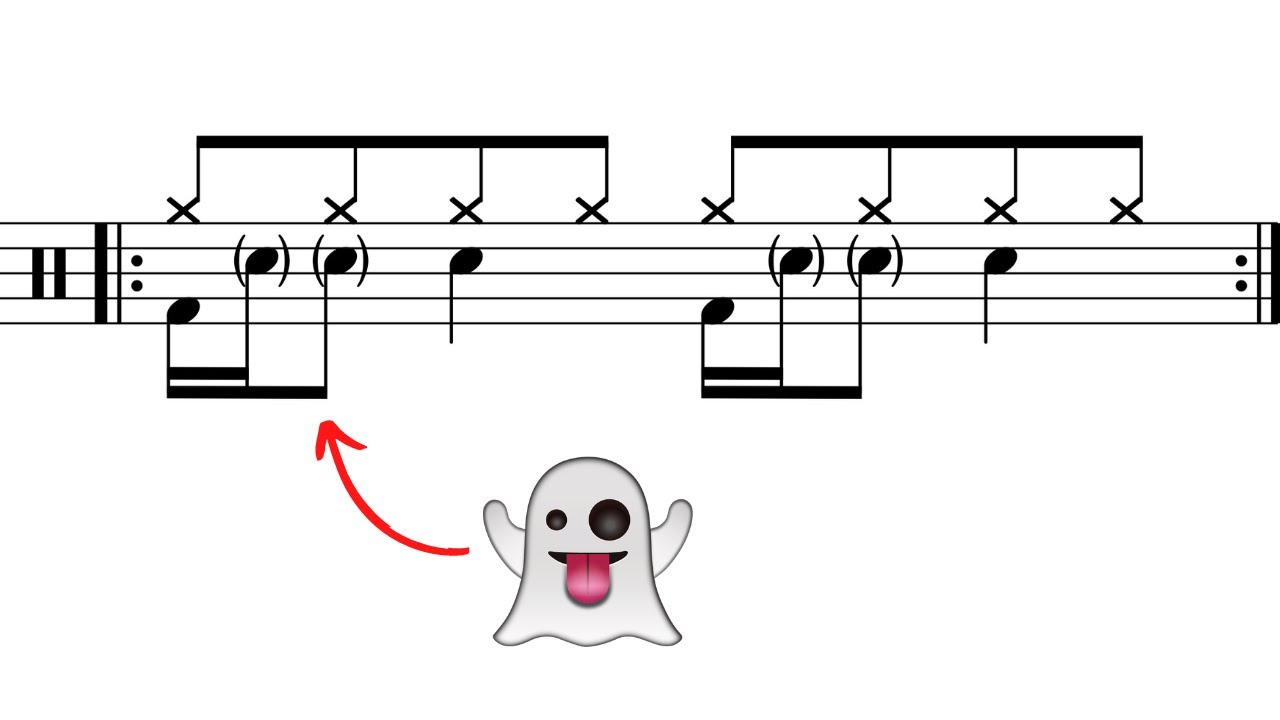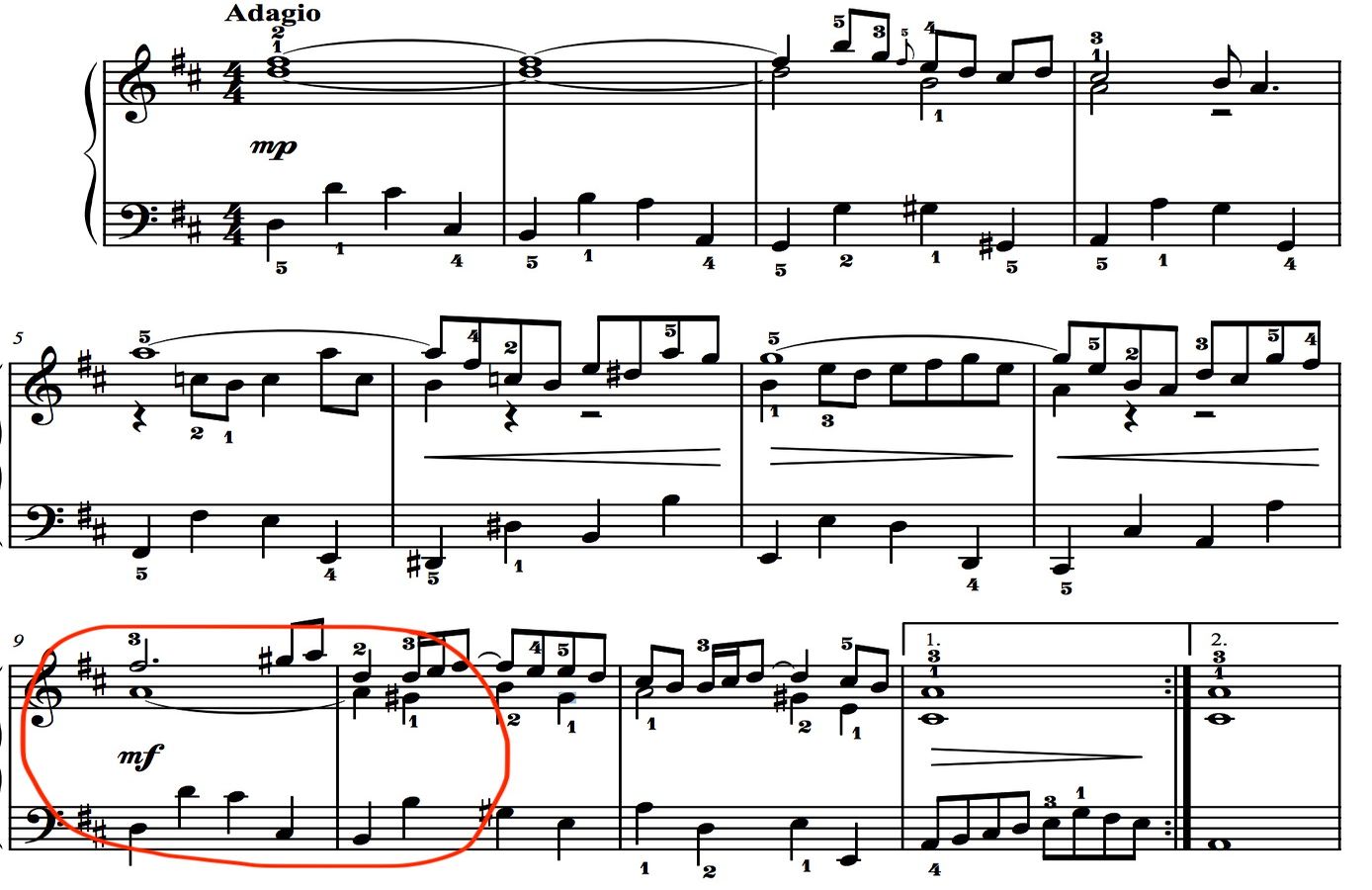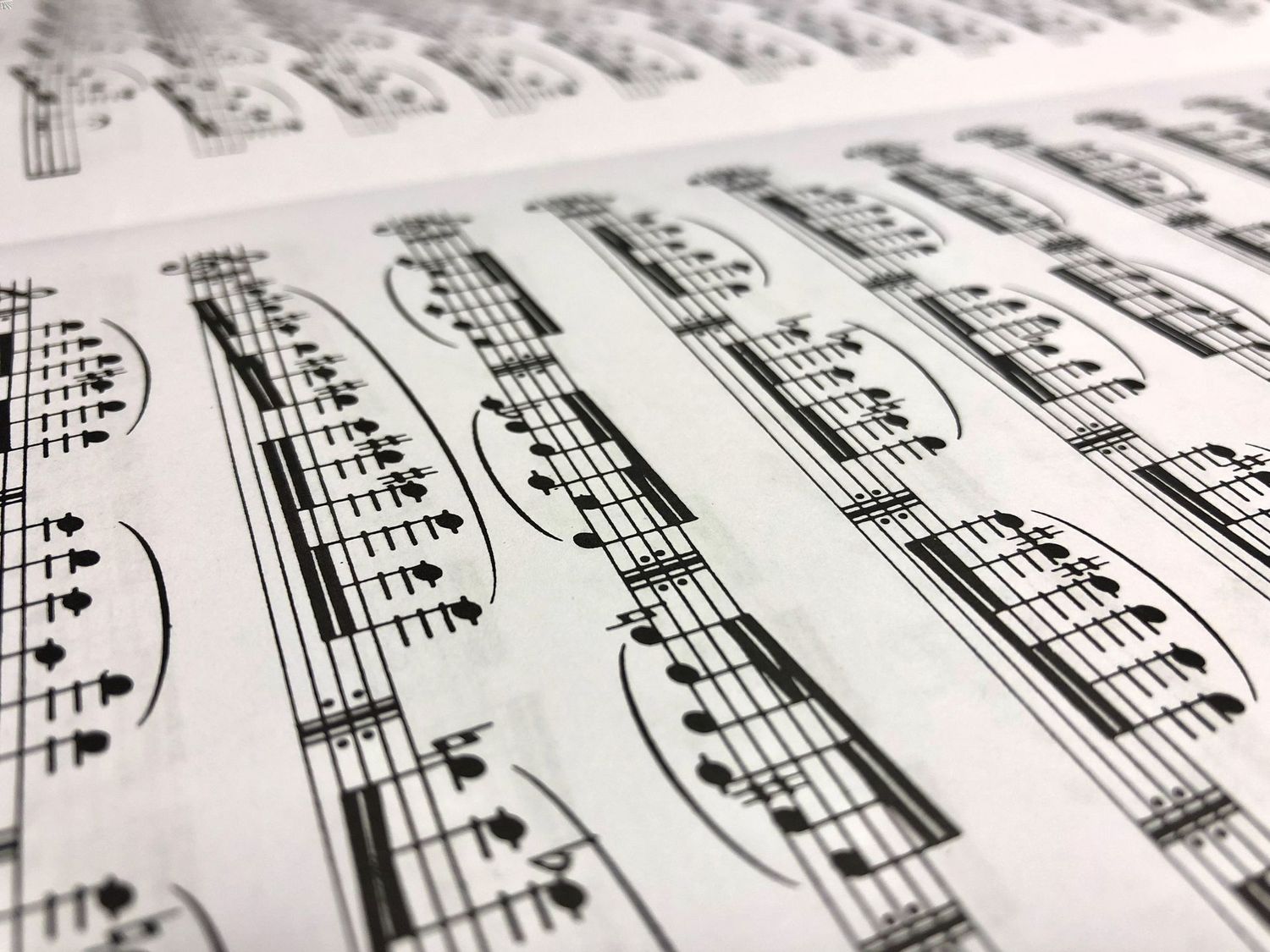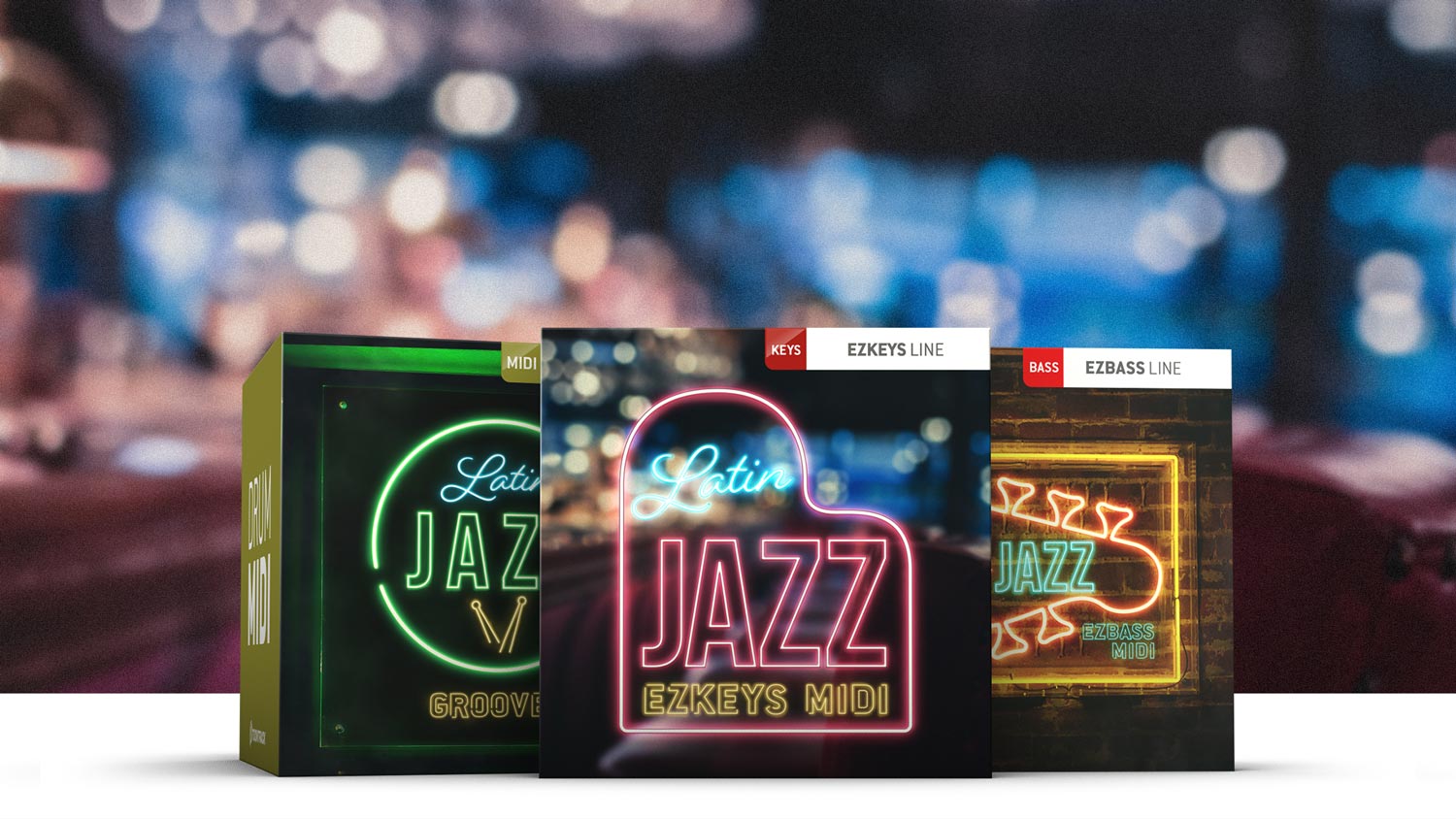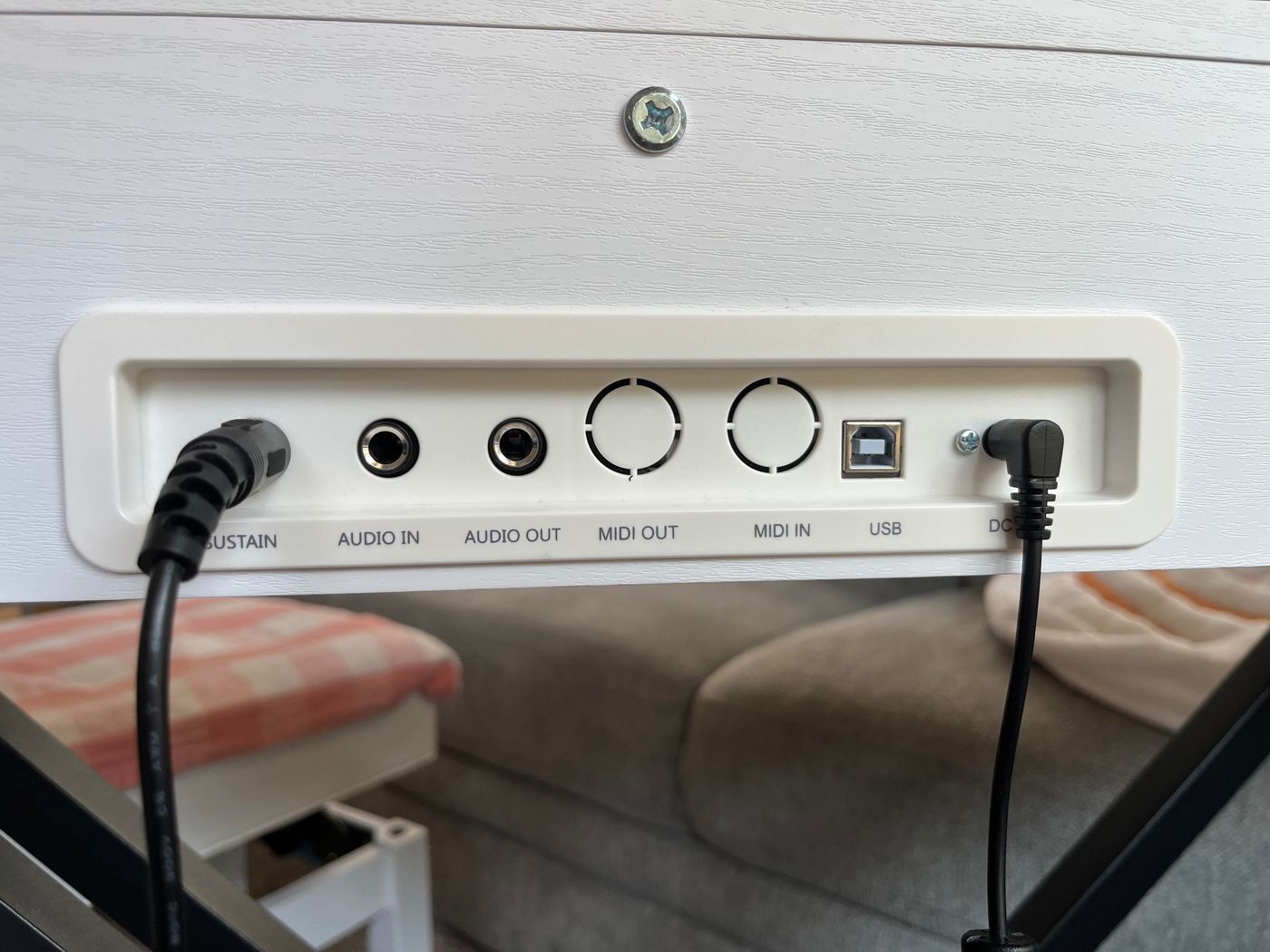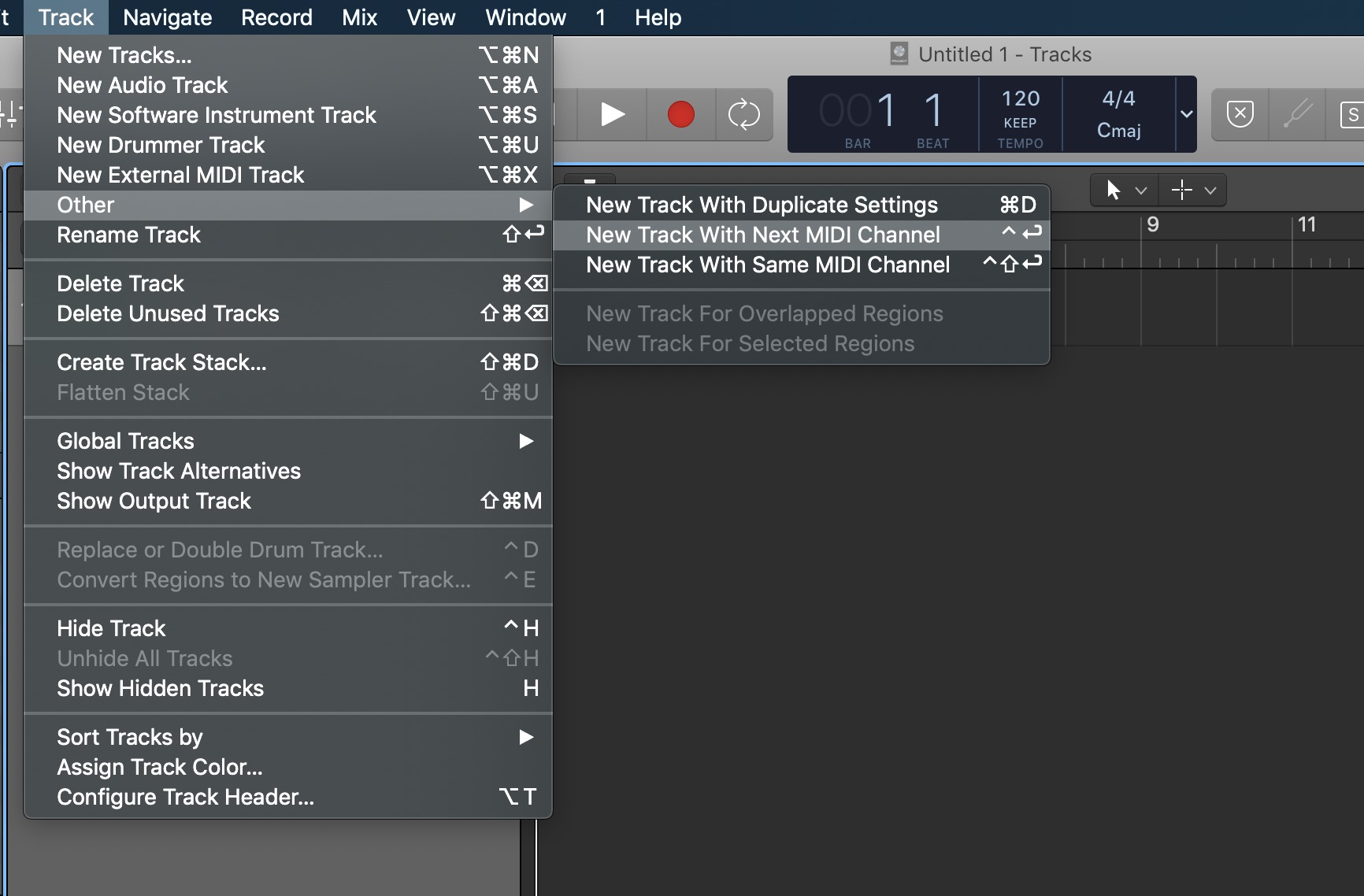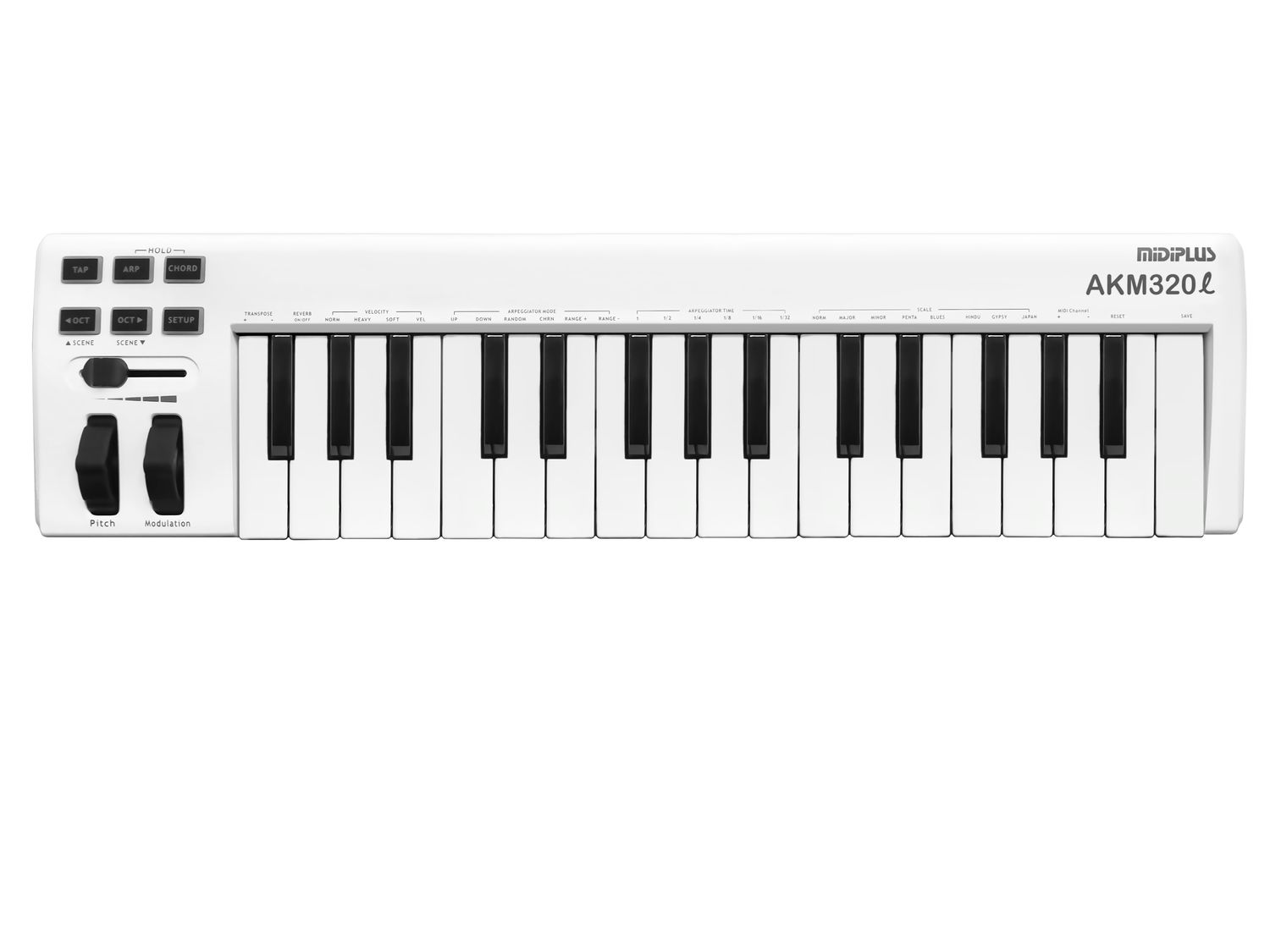Home>Production & Technology>MIDI>What Notes For General MIDI
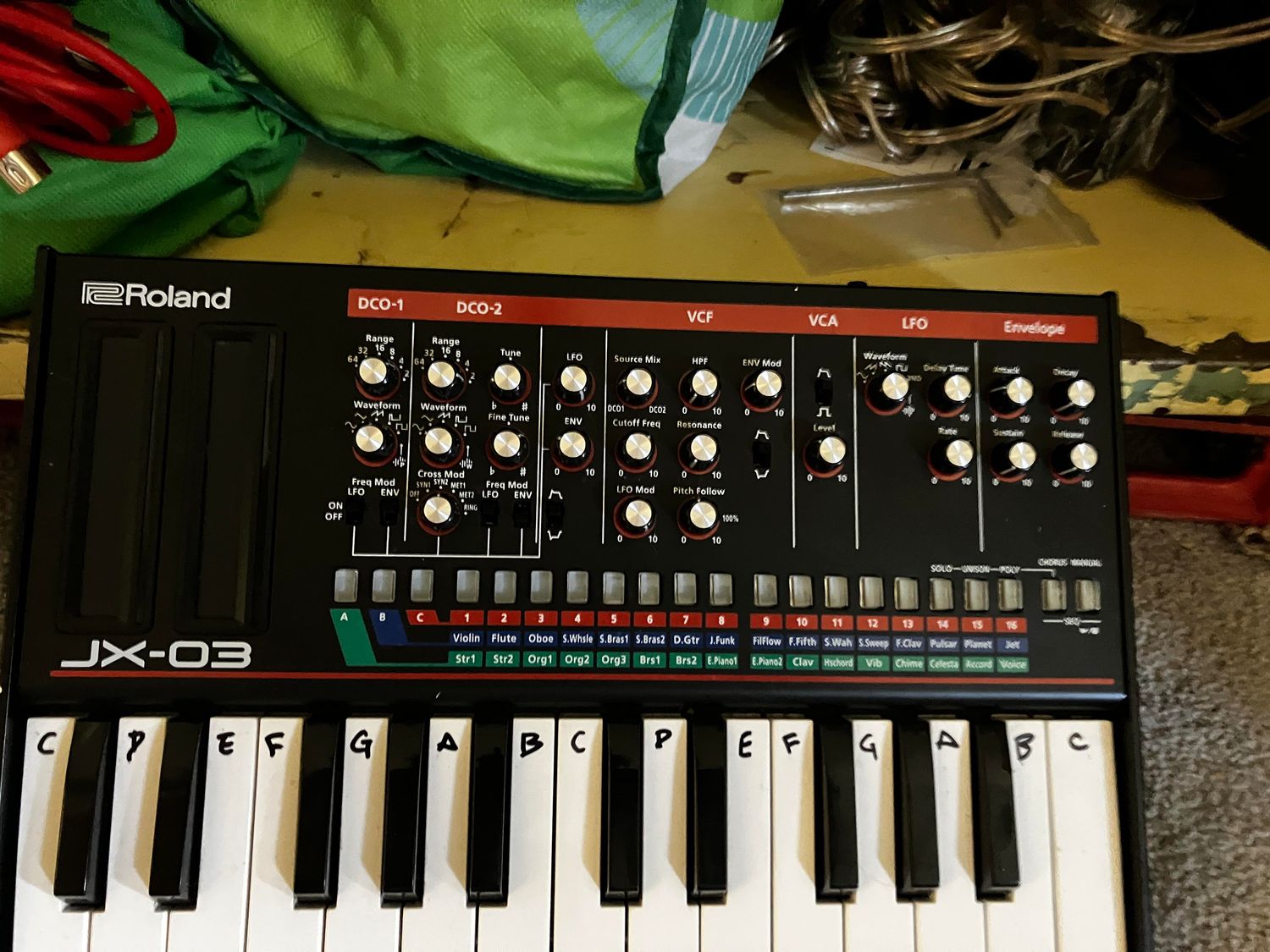

MIDI
What Notes For General MIDI
Modified: March 9, 2024
Discover everything you need to know about General MIDI, including its features, compatibility, and applications. Learn how to make the most of MIDI technology!
(Many of the links in this article redirect to a specific reviewed product. Your purchase of these products through affiliate links helps to generate commission for AudioLover.com, at no extra cost. Learn more)
Table of Contents
Introduction
General MIDI, often abbreviated as GM, is a standard that revolutionized the world of music production and composition. It was introduced in 1991 by the MIDI Manufacturers Association (MMA) and the Japan MIDI Standards Committee (JMSC) to address the compatibility issues that plagued the early days of MIDI (Musical Instrument Digital Interface) technology. This standardization marked a significant milestone in the evolution of digital music, as it aimed to ensure consistent playback of MIDI files across different electronic musical instruments and software.
The advent of General MIDI brought about a level of uniformity that had previously been absent in the realm of electronic music. Prior to its introduction, composers and producers faced the daunting challenge of creating music that would sound consistent across various MIDI-compatible devices. This often led to frustration and disappointment, as the intended musical nuances and expressions were lost in translation when played on different synthesizers or sound modules.
By establishing a set of specifications for MIDI instruments, General MIDI mitigated these compatibility issues and provided a framework for consistent playback. This was achieved through the standardization of instrument sounds, assigning specific sounds to particular program numbers, and defining the behavior of controllers such as volume, pan, and sustain.
Furthermore, General MIDI laid the groundwork for a more streamlined and efficient music production process. It enabled composers and arrangers to compose music with the assurance that their creations would be faithfully reproduced on any General MIDI-compliant device, without the need for extensive manual adjustments or reprogramming.
In essence, General MIDI brought a sense of cohesion and predictability to the world of digital music, empowering musicians and producers with a reliable platform for expressing their musical ideas. Its impact reverberated across the music industry, influencing the way music was created, recorded, and distributed.
As we delve deeper into the realm of General MIDI, it becomes evident that this standard has significantly shaped the landscape of digital music production, offering a level of consistency and compatibility that continues to resonate with musicians and enthusiasts worldwide.
Understanding General MIDI
General MIDI (GM) stands as a pivotal standard in the realm of digital music, serving as a unifying framework for MIDI-compatible devices. At its core, General MIDI is designed to ensure consistent playback of MIDI files across a diverse array of electronic musical instruments and software platforms. This standardization is achieved through a set of specifications that govern the behavior and capabilities of General MIDI-compliant devices.
One of the defining features of General MIDI is the standardized assignment of instrument sounds to specific program numbers. This means that a particular program number will consistently produce the same instrument sound across all General MIDI-compliant devices. For instance, program number 1 is universally assigned to a grand piano sound, allowing composers and producers to confidently utilize this program number knowing that it will yield a consistent piano sound on any GM-compliant instrument.
Furthermore, General MIDI defines a standard set of instrument sounds, encompassing a diverse range of musical timbres such as pianos, guitars, strings, brass, and percussion. This comprehensive sound bank empowers musicians and composers with a rich palette of timbres to craft their musical compositions, knowing that these sounds will be faithfully reproduced across different GM-compliant devices.
In addition to sound standardization, General MIDI also governs the behavior of MIDI controllers, ensuring consistent interpretation of control messages such as volume, pan, and sustain. This harmonized control specification enables composers and performers to convey expressive nuances in their music, confident that these nuances will be accurately conveyed across various General MIDI instruments.
Moreover, General MIDI encompasses a standardized drum mapping, providing a consistent layout for drum and percussion sounds across different devices. This drum mapping ensures that drum patterns and rhythms are faithfully reproduced, regardless of the specific GM-compliant instrument being used.
Overall, the essence of General MIDI lies in its ability to provide a level playing field for digital music creation and playback. By establishing a common set of specifications for instrument sounds, controllers, and drum mapping, General MIDI has fostered a cohesive ecosystem where musical creativity can flourish without being hindered by compatibility concerns. This standardization has significantly simplified the process of creating and sharing MIDI-based music, making it accessible to a broader audience while maintaining a high degree of fidelity and consistency.
In the next section, we will explore the benefits of General MIDI and how it has transformed the landscape of digital music production and performance.
Benefits of General MIDI
General MIDI (GM) has brought about a multitude of benefits that have significantly impacted the world of digital music production and performance. These advantages have contributed to the widespread adoption and integration of General MIDI across a diverse range of musical applications. Let's delve into the compelling benefits of General MIDI:
-
Consistency and Compatibility: One of the foremost benefits of General MIDI is the assurance of consistent playback across different GM-compliant devices. This means that composers and producers can create music with the confidence that it will sound as intended on any General MIDI instrument. The standardized assignment of instrument sounds and control specifications ensures a level of consistency that transcends individual hardware or software platforms.
-
Streamlined Workflow: General MIDI has streamlined the music production process by providing a uniform framework for composing and arranging music. With a standardized set of instrument sounds and control parameters, musicians can focus on their creative expression without the need to extensively reprogram or adjust their compositions for different devices. This streamlined workflow enhances productivity and allows for a more seamless realization of musical ideas.
-
Accessibility and Interoperability: The adoption of General MIDI has fostered a more accessible and interoperable environment for music creation and distribution. MIDI files created with General MIDI in mind can be shared and played back on a wide array of devices, ensuring that the intended musical expression transcends hardware or software limitations. This accessibility has contributed to the democratization of music production, allowing a broader audience to engage with and enjoy MIDI-based music.
-
Rich Sound Palette: General MIDI offers a rich and diverse palette of instrument sounds, encompassing a wide range of musical timbres such as pianos, guitars, strings, brass, and percussion. This extensive sound bank empowers musicians and composers with a versatile sonic toolkit, enabling them to craft expressive and dynamic compositions without being constrained by the limitations of individual devices.
-
Expressive Control: The standardized control specifications within General MIDI enable musicians to convey expressive nuances in their music. Whether it's adjusting volume, panning, or applying sustain, these control parameters are interpreted consistently across different GM-compliant devices, allowing for a seamless transmission of musical expression.
-
Educational Value: General MIDI has played a pivotal role in music education by providing a standardized platform for learning and creating music. Educational materials and resources leveraging General MIDI ensure that students and aspiring musicians can engage with music in a consistent and coherent manner, fostering a deeper understanding of musical concepts and composition.
In essence, the benefits of General MIDI extend far beyond technical standardization. It has empowered musicians, enhanced creativity, and contributed to the democratization of music production. The widespread adoption of General MIDI underscores its enduring value and relevance in the ever-evolving landscape of digital music.
Limitations of General MIDI
While General MIDI (GM) has undoubtedly revolutionized the realm of digital music production, it is essential to acknowledge its limitations and the constraints it imposes on musical expression and creativity. Understanding these limitations is crucial for musicians, producers, and enthusiasts seeking to leverage GM-compliant devices effectively.
Sound Variation Constraints
One of the primary limitations of General MIDI lies in the inherent constraints of sound variation. While the standardized set of instrument sounds provided by GM offers consistency, it also imposes limitations on the depth and diversity of sonic expression. Musicians may find themselves constrained by the predefined timbres and the inability to manipulate sound parameters beyond the standardized GM specifications.
Lack of Individual Instrument Character
General MIDI's standardized assignment of instrument sounds to specific program numbers, while ensuring consistency, may lead to a lack of individual instrument character. For instance, a piano sound designated by a specific program number will sound identical across all GM-compliant devices, potentially limiting the exploration of unique sonic characteristics inherent to different instruments.
Limited Polyphony and Articulation
Another notable limitation is the constraint on polyphony and articulation. General MIDI imposes a maximum polyphony limit, which may restrict the complexity of musical arrangements and compositions. Additionally, the predefined articulation and expression parameters may not fully capture the nuances and intricacies of a live performance, potentially limiting the emotive depth of musical expression.
Inflexibility in Sound Customization
While the standardized instrument sounds provided by General MIDI offer a level of predictability, they may also hinder extensive sound customization. Musicians and sound designers seeking to sculpt and tailor sounds to their specific artistic vision may find the GM specifications limiting in terms of flexibility and sonic manipulation.
Compatibility with Contemporary Sound Design
As music production techniques and sound design continue to evolve, General MIDI's standardized sound bank may not fully align with contemporary sonic palettes and production aesthetics. This misalignment can pose challenges for artists aiming to integrate cutting-edge sound design elements into their compositions while adhering to GM compatibility.
Impact on Artistic Innovation
The constraints imposed by General MIDI, while fostering consistency and interoperability, may inadvertently impact artistic innovation. Musicians and composers aspiring to push the boundaries of sonic exploration and create unconventional musical experiences may find the standardized nature of GM to be limiting in realizing their avant-garde visions.
Acknowledging these limitations is imperative for musicians and producers navigating the landscape of digital music production. While General MIDI offers a robust framework for consistency and compatibility, it is essential to recognize its constraints and explore supplemental tools and techniques to transcend these limitations and unleash the full spectrum of creative expression.
Best Practices for Working with General MIDI
When working with General MIDI (GM), embracing best practices is essential to harness the full potential of this standardized framework while mitigating its inherent limitations. By adhering to these best practices, musicians, composers, and producers can optimize their creative workflow and ensure the seamless integration of GM-compliant devices into their music production endeavors.
Embrace Sound Layering and Effects Utilization
Incorporating sound layering and leveraging onboard effects within GM-compliant devices can enhance the sonic richness and depth of musical compositions. By judiciously layering instrument sounds and applying effects such as reverb, chorus, and equalization, musicians can imbue their compositions with a heightened sense of sonic texture and spatial depth.
Explore Sound Variation Techniques
While GM imposes constraints on sound variation, creative exploration within the standardized sound bank is crucial. Musicians can experiment with modulation, pitch bend, and velocity sensitivity to introduce nuanced variations within the predefined instrument sounds. This approach allows for expressive musical phrasing and adds a personalized touch to GM-based compositions.
Leverage MIDI Controller Mapping
Utilizing MIDI controller mapping to tailor the behavior of GM-compliant devices can empower musicians to exercise greater control over expressive parameters. Mapping MIDI controllers to parameters such as volume, pan, and modulation enables real-time manipulation of musical nuances, fostering dynamic and emotive performances within the confines of General MIDI.
Supplement with Sound Libraries and Virtual Instruments
While adhering to GM specifications, integrating supplemental sound libraries and virtual instruments can expand the sonic palette beyond the standardized GM sound bank. This approach allows for the infusion of contemporary and genre-specific sounds, complementing the inherent timbres of GM while broadening the creative scope of musical compositions.
Optimize Polyphony Allocation
Given the polyphony limitations inherent in GM-compliant devices, optimizing polyphony allocation is crucial for crafting intricate and layered musical arrangements. Understanding polyphony management techniques and judiciously allocating voices to different musical elements can prevent polyphony-related constraints and ensure the faithful reproduction of complex compositions.
Consider GM as a Starting Point, Not a Limitation
Approaching General MIDI as a foundational framework rather than a confining limitation fosters a mindset of creative adaptation. By acknowledging GM's standardized specifications as a starting point, musicians can explore innovative ways to transcend its constraints, leveraging its consistency and compatibility as a springboard for artistic innovation.
By embracing these best practices for working with General MIDI, musicians and producers can navigate the nuances of GM-compliant devices with confidence and creativity. While acknowledging the limitations inherent in GM, the strategic application of these best practices empowers artists to harness the standardized framework of GM while transcending its confines to realize expressive and compelling musical compositions.
Conclusion
In conclusion, General MIDI stands as a cornerstone of digital music standardization, offering a cohesive framework for consistent playback and interoperability across a diverse array of MIDI-compatible devices. The evolution of General MIDI has significantly influenced the landscape of music production, empowering musicians, composers, and enthusiasts with a reliable platform for expressing their musical creativity. While acknowledging its limitations, the benefits and best practices associated with General MIDI underscore its enduring relevance and impact on the world of digital music.
The standardization brought forth by General MIDI has fostered a sense of predictability and accessibility, allowing music creators to focus on their artistic expression without being encumbered by compatibility concerns. The assurance of consistent playback and the expansive sound palette provided by GM-compliant devices have democratized music production, making it accessible to a broader audience while maintaining a high degree of fidelity and compatibility.
Furthermore, the best practices for working with General MIDI offer a roadmap for musicians to navigate the constraints of GM while leveraging its standardized framework to realize expressive and compelling musical compositions. By embracing sound layering, exploring sound variation techniques, and supplementing GM with contemporary sound libraries, artists can transcend the inherent limitations of GM and imbue their compositions with personalized sonic nuances.
As the digital music landscape continues to evolve, General MIDI remains a foundational standard that bridges the gap between diverse MIDI-compatible devices, ensuring that musical compositions transcend hardware or software limitations. Its educational value and role in music pedagogy further solidify its significance, providing a standardized platform for learning and creating music.
In essence, General MIDI's enduring legacy lies in its ability to harmonize the digital music ecosystem, facilitating a seamless exchange of musical ideas and compositions. While it presents constraints, the strategic application of best practices allows musicians to harness the standardized framework of General MIDI, transcending its confines to realize expressive and innovative musical experiences.
As we look to the future of digital music, General MIDI's impact and relevance serve as a testament to its enduring value in fostering a cohesive and inclusive environment for musical creativity. It continues to resonate with musicians and enthusiasts worldwide, shaping the way music is created, shared, and experienced in the digital age.

